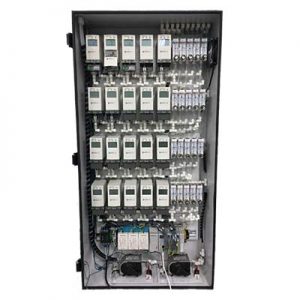If you work in a facility where dangerous gases are present, then you probably appreciate the importance of gas detection monitors. Whether fixed or portable, gas leak detection equipment plays a crucial role in maintaining the safety of a work environment and protecting the health of a business’s employees. Gas detection systems can’t do their job, however, if they become old and worn down. To fortify the safety of your work environment, it’s good to know how you can increase the lifespan of your gas leakage detection system and to be aware of when it’s time for your sensors to be replaced. Here are some things you should know about the life expectancy of your gas monitoring equipment.

The Basics of a Gas Sensor
It should come as no surprise that gas sensors are highly sensitive pieces of equipment. Electrochemical sensors, for instance, contain electrodes that are wetted with an electrolyte (usually sulfuric acid) which is then treated with a catalyst which creates a small electrical current when the target gas is introduced. It is because even the smallest concentrations of dangerous gases (such as carbon monoxide) need to be detected that even a small degradation in the sensitivity of a gas sensor can be life-threatening if the sensor isn’t replaced. When used properly, and given proper maintenance, most electrochemical sensors will last approximately two years; catalytic and solid-state refrigerant sensors, five years; NDIR and infrared sensors, seven to eight years.
Factors Impacting Sensor Life
Extreme hot and cold temperatures will diminish the effectiveness of most sensors over time. Manufacturers will state the operating temperature range for sensors (usually approximately -30°C to 50°C), so it’s important to make a note of this and avoid extreme temperatures whenever possible. Other environmental factors include excess humidity, interfering gases, and excessive vibrations. It’s also worth noting that sensors have a shelf life, after which they will no longer work. Electrochemical sensors have a shelf life of fewer than six months, so if you intend to have extra sensors on hand for backup, you shouldn’t wait too long before using them for the first time.
The Importance of Regular Maintenance
There are some steps you can take to optimize the performance of your gas monitors and extend their life. Periodic bump tests and calibration, for instance, are necessary for keeping your sensors safe and working properly. While exposure to a high concentration of gases can harm a sensor, the amount required for bump tests is far too small to cause any damage.
Service Contracts
One of the most effective ways to get the longest lifespan and best performance from your sensors is to sign up for a service contract with your provider. Depending on your needs, you can either mail in sensors for calibration and repairs, or have a professional visit your facility and service your equipment on site. Either way, having your equipment tested and seen by a trained technician is always a good idea.
If you think your gas sensors are too old or are considering an upgrade in your fixed gas detection systems, contact the experts at DOD Technologies, Inc. We’ve been a leading provider of gas detection equipment since 2003, and have everything you need for a safe work environment. Questions? Call us today at (815) 788-5200.






